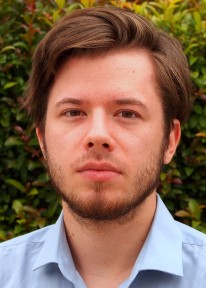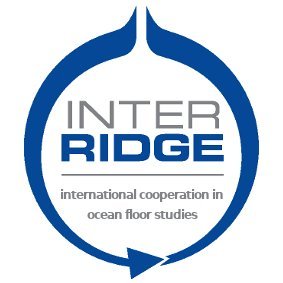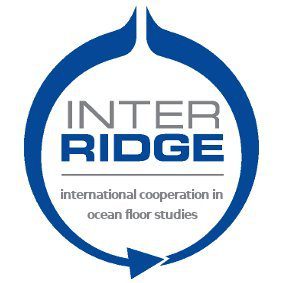InterRidge Fellows 2015
The InterRidge Student and Postdoctoral Fellowship Program continues to play an important role in the careers of early career ocean scientists. There was a high number of proposals submitted again this year and we awarded one InterRidge funded Fellowships.
The recipients of this year’s InterRidge Fellowships is:
Jotautas Baronas (a PhD student at the University of Southern California, USA)
Jotautas Baronas (a PhD student at the University of Southern California, USA)

Jautautas J. Baronas is a PhD student in the Earth Sciences department at the University of Southern California. He previously obtained a BS in Chemistry at Jacobs University Bremen and a MS in Earth Sciences at the University of Southern California. His PhD research is focused on developing and calibrating novel geochemical proxies to study low temperature processes, and now, with the help of the InterRidge Fellowship, high temperature processes as well. In particular, his PhD work is aimed at describing a global marine budget of germanium isotopic composition. Germanium (Ge) is a trace element whose biogeochemical behavior is closely related to that of silicon (Si). Isotopic ( δ 74/70Ge) and elemental (Ge/Si) composition of seawater can thus reveal crucial information about silicate weathering on land, biological Si cycling in the surface ocean, and the importance of hydrothermal fluid discharge in the deep ocean. With this in mind, Jotautas is currently working on describing δ 74/70Ge and Ge/Si systematics in various river watersheds worldwide, as well as major oceanic
basins. However, hydrothermal vent fluids are a major source of germanium and silicon to the ocean and therefore a robust estimate of the δ 74/70Ge and Ge/Si signature in various hydrothermal systems is crucial for the construction of a global marine budget. There have been some efforts to investigate Ge chemistry in mid-ocean ridge and ridge-flank systems, however, not back-arc hydrothermal systems, which tend to have very variable fluid chemistry and therefore may offer valuable insights into δ 74/70Ge and Ge/Si fractionation processes.
The InterRidge Fellowship will allow Jotautas to travel to the University of Brest/IFREMER to collaborate with Dr. Oliver Rouxel in the analysis of hydrothermal fluid samples from the Manus Basin back-arc hydrothermal system. Analysis of δ 74/70Ge is an arduous process that involves sample purification by column chemistry, conversion of Ge into a gaseous hydride species, and isotopic analysis on multi-collector ICP-MS. This collaboration, as enabled by the InterRidge Fellowship, will give Jotautas access to the world-class instrumentation at IFREMER and the expertise of Dr. Rouxel, who is a leading researcher of hydrothermal systems, and Ge systematics in particular. The results of this study will enhance our understanding of geochemical processes occurring in back-arc hydrothermal systems and allow for a construction of a more robust global isotopic germanium budget.
InterRidge report: Ge isotope systematics in low- and high-temperature settings
Dr. J. Jotautas Baronas, University of Southern California, USA (now at University of Cambridge, UK)
Host: Dr. Oliver Rouxel at IFREMER, Brest, France
I received the InterRidge Fellowship in 2016 to study the global Ge isotope cycle, with a particular focus on back-arc hydrothermal systems. The fellowship enabled my 6-week tenure at the IFREMER institute in Brest, France, where I performed sample preparation and analysis under the guidance of Dr. Oliver Rouxel, who is the leading expert of Ge isotope geochemistry.
Germanium (Ge) is an element that is leached from silicate rocks both during low temperature continental weathering and during high temperature hydrothermal alteration and delivered to the ocean in dissolved form by rivers and hydrothermal fluids, respectively. As a result, elemental (e.g. Ge/Si) and isotopic ratios of Ge may help estimate current hydrothermal and weathering inputs to the ocean, as well as how their balance might have changed in the past, both on glacial-interglacial and million-to-billion year timescales.
Prior to our work carried out at IFREMER, very little was known about the isotopic composition of Ge in natural fluids. Most previous studies focused on mid-ocean ridge and hot spot hydrothermal settings. We therefore focused on back-arc hydrothermal systems, in particular the Manus basin, which vent fluids with a wide array of temperatures, acidities, and geochemical compositions. As such, this system is an ideal testing ground for novel geochemical proxies. In addition, we analyzed an array of low-temperature fluids, such as river waters and marine sediment pore waters, to better constrain the global Ge isotope budget.
We have found that the Ge isotopic composition (δ 74Ge) in the Manus basin fluids ranges from -0.4 to 2.3 (±0.1) ‰ . Negative correlation between fluid δ 74Ge and Ge/Si indicates that fractionation likely occurs during Ge uptake into secondary mineral phases, which typically exhibit high Ge/Si and low δ 74Ge. Previous work has shown that oceanic and continental crust δ 74Ge ranges from 0.4 to 0.7 ‰ . Therefore, Manus vent fluids appear to be fractionated towards both lighter and heavier composition, although additional work is needed to establish whether the lighter composition might represent re-dissolution of secondary minerals. Overall, the range of dissolved δ 74Ge at Manus is similar to other high-temperature systems, such as EPR or Loihi. A more detailed analysis of the factors controlling δ 74Ge in the Manus system is currently underway. In contrast, the analysis of a number of world’s major rivers indicates typically higher δ 74Ge, ranging from 0.9 to 5.5 ‰ . The heavy riverine composition is the result of fractionation during the formation of secondary phases during low-temperature weathering processes.
This work has been presented at several conferences and seminars and will be published in a number of manuscripts, currently in review or preparation:
Baronas, J.J., D.E. Hammond, O. Rouxel. The global δ 74Ge cycle (invited). AGU Fall Meeting 2017.
Baronas, J.J. Germanium, Silicon, and their isotopes – tracing weathering across space and time. GFZ Potsdam seminar (2017).
Baronas, J.J., D.E. Hammond, O. Rouxel, A.J. West, M. Torres, S. Opfergelt, K.W. Burton, R.H. James, P. Pogge von Strandmann, D. Monteverde, J. Gaillardet, J. Bouchez, V. Galy. Germanium stable isotopes: is there potential for paleo-weathering reconstruction? Goldschmidt 2016.
Baronas, J.J., D. Hammond, A.J. West, O. Rouxel, B. Georg, M. Torres, J. Bouchex, J. Gaillzrdet. Ge and Si isotope geochemistry in global rivers: element-specific response to weathering intensity. Earth and Planetary Science Letters (in review).
Baronas, J.J., D.E. Hammond, O. Rouxel, D. Monteverde. Contrasting Ge and Si isotope dynamics in marine sediments. Geochimica et Cosmochimica Acta (in review).

